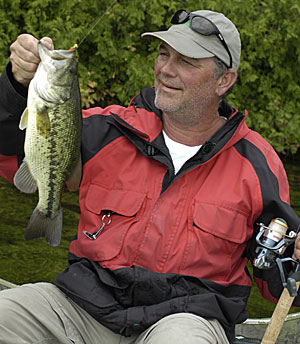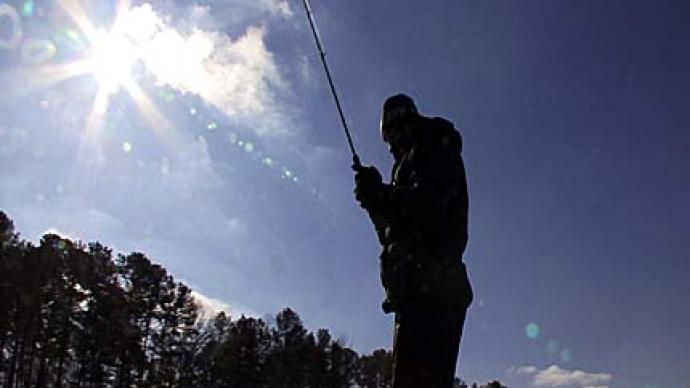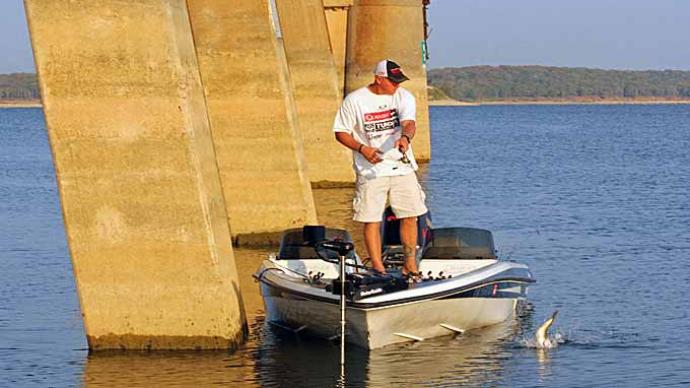
You wouldn't believe it if I told you how many bass I’ve caught on micro jigs. I’m not talking about downsizing to a ¼-ounce jig or even a 1/8-ounce jig when the bite gets tough. I’m talking about catching 4- and 5-pound bass or larger on 1/32- or even 1/64-ounce rigs consistently. When I’m fishing minute jigs, I’m fishing equally tiny baits on them. You wouldn’t think something tiny would even interest a bass, but they do.
The tactic centers on the panfish spawn. Bass spawn much earlier than panfish but tend to hang around the beds. Once panfish spawning starts, post-spawn bass are still patrolling the bedding area and can be seen cruising the shallows. Why they do this isn’t exactly clear. Maybe the bass are still guarding their nests. Or they could be partaking in the glut of panfish fry that’s suddenly available.
Maybe they target other baitfish or creatures raiding the panfish nests like gobies or crayfish. I don’t know because I’ve never killed a bass to check out what’s in its stomach. I’ve never seen one spitting up anything when I caught one, so it’s a mystery. Using micro jigs, you can catch some nice bass almost by accident by targeting the panfish beds.
Bluegills and sunfish typically begin spawning when the shallows reach 65 to 78 degrees. When the shallows begin to resemble the moon's surface, you know the panfish spawn is in high gear, and bass, both largemouth and smallmouth will be in the area. Spawning bluegills and sunfish in a good panfish lake will be too big for most bass to eat, so bass must be there for something else.
A necessary piece of equipment for taking advantage of the hotbed bite are polarized glasses. Good polarized glasses will help you spot active panfish beds and cruising bass. Seeing into the water will also help you locate weed lines, weed pockets, and hard-bottomed fine gravel or sand areas where panfish will spawn. Bass either cruise the spawning beds or set up ambush points along weed edges. Glasses will help you locate both.

While many anglers opt for shorter, 4-1/2- or 5-foot ultra-light outfits to maximize the spunky panfish fight, fishermen should use longer, slightly heavier rods and reels when bass are present. For one thing, casting tiny micro lures is easier with a longer rod, especially if there’s wind. A longer rod ups the odds of landing rambunctious bass without fighting them to exhaustion and facilitates a quick release. A rotund, bull bluegill will also test the limits of a medium/light outfit and make it easier to drive a slip bobber and jig into a strong wind. St. Croix Rods makes several spinning rods ideal for micro finesse fishing in their Legend Elite line, like 6’ 6” ES66MLF, 7’ ES70MLF, and ES70LF.
Spinning reels must be super smooth to handle the ultra-thin line used when micro-fishing and to handle out-sized bass. Line capacity is not a significant issue, but a smooth drag is, or you risk popping frail monofilament or fluorocarbon. It helps if the reel balances the rod to prevent fatigue and facilitate accurate casts. Shimano’s Stradic C14+ (STCI42500HGFB) and similar reel with high gear rations and ultra-smooth drags are perfect for tangling with pugnacious panfish and the occasional brawler bass.
The raspy teeth of bass and fins of panfish can easily fray thin mono and fluorocarbon. Check your line often and make sure to retie every once in a while. Highly-abrasive resistant lines, like Trilene XT or a tough fluorocarbon like Sufix Castable Invisiline, will stand up to the abuse. A clear 4- to 6-pound test line is the best choice when using either line.
I have caught dozens of bass around panfish beds on ice-fishing teardrops and wax worms, but after a while, we discovered we could catch just as many panfish and bass on scent-enhanced plastics, like Northland Tackle’s Impulse soft plastics. Impulse plastics come in a myriad of shapes and sizes. There are all kinds of bug shapes, minnows, tubes, crayfish, tapeworms, and micro-sized creatures that panfish typically eat, and you’ll soon discover bass relish, too.

Usually, there’s no need to match the hatch. You might discover a shape, color, or configuration that the fish prefer. I found that a yellow or white twister tail matched to a round-ball head jig worked fine most of the time. Another bait that seems to excel when the spawn is in high gear, particularly for bass, is Northland’s Impulse Live Rigged Paddle Minnow. These pint-sized swimbaits are exceedingly life-like and come in a bluegill color that bass crush. The baits also come in 3/64 and 3/32 versions for micro fishing.
The technique depends mainly on how you like to fish. With the longer medium-light rod and light line, you can cast tiny jigs quite far, and swimming or hopping jigs along the bottom is usually met with success. If you spot stationary bass, you can use a pendulum cast to drop the jig in the fish’s sight zone quietly. If there’s a lot of wind, a better choice is to suspend the jig below a slip bobber, so it rides a foot off the bottom.
Match the bobber shape and weight to the velocity of the wind so you can cast. The slip bobber helps keep the jig at the proper depth without getting hung on the bottom or vegetation. With the bobber or float set at a pre-determined depth using the wind, you can make long casts upwind and let the bobber drift. It’s almost like fishing a river. Panfish will rise off the beds they’re defending and inhale the jigs, and bass in the area will oblige, too. With panfish, the bobber will bounce a couple of times before going under; with bass, the bobber will disappear.
There are probably plenty of avid bass anglers who have not fished with a bobber since childhood. Try this technique near the panfish beds, and you might be headed to the store to get some slip floats.
BassResource may receive a portion of revenues if you make a purchase using a link above.




